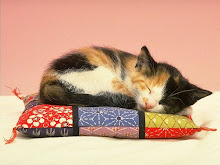 | School House
The Museum Village schoolhouse is a
replica of the Monroe Stone Schoolhouse built in 1805. Like most 19th century rural schoolhouses, the Monroe school was a simple one-room building. Students of all grades and ages sat together and learned arithmetic, spelling and writing. The school year lasted only 12 weeks from Thanksgiving to early spring because most of the children from the area worked on family farms. |
General Store
The J.C. Merritt Store at Museum Village is named after a similar store, owned and operated by John Carlton Merritt from 1875 to 1924. The collection of old food packages, sewing notions, items of clothing and hardware come from the original Merritt Store, a family owned business. The store not only served the local clientele but all the farmsteads in a 10-12 mile radius outside the village.
|
 |
 |

Drug Store
The museum's exhibit of the Vernon Drugstore features the authentic content, fixtures and furnishings of Charles Vernon's store, originally located in the nearby village of Florida. In the 19th century, most of New York's rural communities had a drugstore where the local residents could buy medicines of all kinds. Herbs, healthcare apparatuses, eyeglasses, tobacco, and even refreshing soda and ice cream were available.
|
Log Cabin
The log cabin that stands next to the Vernon Drugstore on the Museum's grounds originally stood just beyond the forest of Dean's Mine. The cabin dates from the last quarter of the 18th century. Visitors to the cabin learn how a family of five lived in a small, one-room building. |  |
 |
Weave Shop
In the first half of the 19th century, yarn was spun on spinning wheels and cloth was woven on looms. Shirts, pants and dresses were then cut from the homemade cloth and hand sewn. At the Museum Village weave shop you can observe the old methods of weaving fabric on a handloom and how the intricate patterns were followed.
|
Candle Shop
At the candle shop learn the process of creating a candle and the different materials used to make them. Then, try your hand at dipping your own candle to take home. See an exhibit on the evolution of lighting devices from the oil lamp to the electric light bulb. |  |

 Museum Village was the vision of Roscoe William Smith, an electrical engineer, entrepreneur, philanthropist and collector who contributed to his native Orange County in many ways during his 99 years. Roscoe made his fortune as founder of the Orange and Rockland electric company in 1905. The wealth he generated from his successful company and investments allowed him to give back to the community in many ways. Probably Mr. Smith's most cherished gift to the local community was Museum Village of Old Smith's Clove. Mr. Smith was passionate about American history and was an avid collector of Americana. His collection varied widely, from textiles and porcelain items to horse-drawn carriages. His main interest, was in craft tools and mechanical devices: their invention, adaptation and development which he realized were slowly disappearing.
Museum Village was the vision of Roscoe William Smith, an electrical engineer, entrepreneur, philanthropist and collector who contributed to his native Orange County in many ways during his 99 years. Roscoe made his fortune as founder of the Orange and Rockland electric company in 1905. The wealth he generated from his successful company and investments allowed him to give back to the community in many ways. Probably Mr. Smith's most cherished gift to the local community was Museum Village of Old Smith's Clove. Mr. Smith was passionate about American history and was an avid collector of Americana. His collection varied widely, from textiles and porcelain items to horse-drawn carriages. His main interest, was in craft tools and mechanical devices: their invention, adaptation and development which he realized were slowly disappearing.![I've always liked collecting old things, Mr. Smith once explained, and now I've gathered them here [at Museum Village] to show people what the life of our ancestors was like – what used to be the American way of life.](http://www.museumvillage.org/images/smithquote.gif)






















